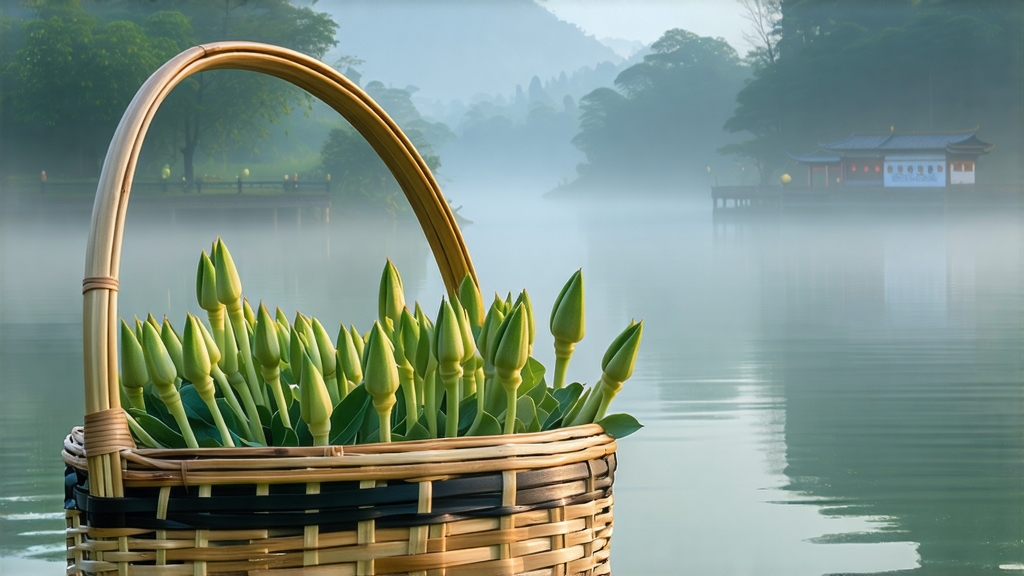
Biluochun, whose name translates literally to “Green Snail Spring,” is one of China’s ten most celebrated teas, yet it remains a delicate secret outside the circles of serious tea lovers. Grown on the mist-lapped peninsulas of Dongting Mountain in Taihu Lake, Jiangsu Province, this emerald-green tea is prized for its tightly rolled spiral shape, downy silver tips, and an unexpectedly fragrant cup that carries the scent of apricot blossoms, fresh artichoke, and lake air. To understand Biluochun is to step into a 1,200-year-old story of emperors, poets, monks, and the cool spring mists that rise off China’s third-largest freshwater lake.
Historical whispers place the tea’s birth during the Tang dynasty (618-907), when local mountain dwellers noticed that wild tea shoots growing among peach, plum, and apricot trees absorbed the floral aromatics of their neighbors. By the Song dynasty the leaves were already tribute tea, but the turning point came in 1699 when the Kangxi Emperor tasted it on his southern inspection tour. Struck by the curly, jade-green appearance and the brew’s vivid aroma, he christened it “Biluochun,” replacing its humbler folk name “Xia Sha Ren Xiang”—literally “scary fragrance”—a nod to the tea’s almost perfume-like intensity. Since then, every spring without fail, the mountain’s 3,000 small family plots repeat the same ritual of plucking, pan-firing, and hand-rolling the season’s first flush before the Qingming festival.
Although all Biluochun hails from Dongting Mountain, connoisseurs recognize two micro-origin types: Dongshan (East Mountain) and Xishan (West Mountain). Dongshan slopes are gentler, the soil sandier, yielding a slightly sweeter, more floral cup; Xishan, steeper and rockier, gives a greener, grassier profile with a mineral spine. Within these zones, elevation, tree age, and surrounding fruit orchards create further nuance. Old-tree Biluochun—picked from 50- to 100-year-old bushes rooted in granite crevices—offers a deeper, honeyed finish, while terrace-garden versions are brighter and more vegetal.
The crafting of Biluochun is a race against time and oxidation. Picking begins before dawn when the mountain dew is still cool and the buds are tightly closed. Only the topmost “one bud with one unfolding leaf” is taken, yielding about 90,000 shoots per 500 g of finished tea. The leaves are immediately spread in bamboo trays no thicker than two centimeters to wither for two hours, softening cell walls and evaporating surface moisture. Next comes the kill-green step, unique among Chinese greens for its low-temperature, long-duration pan-fire. Craftsmen work on woks heated to 120 °C, tossing the leaves with bare hands for six to eight minutes until they emit a cooked-bean aroma and the edges feel velvety. Rolling follows while the leaves are still warm; fingers press and flick in a spiral motion, coaxing the iconic snail curl and forcing tiny hairs to the surface. The final low-temperature bake, lasting 40 minutes, locks in fragrance and reduces moisture to below 6 %. The entire process must finish the same day, before the mountain night air re-humidifies the fragile shoots.
To brew Biluochun respectfully, one must think like a lake: cool, clear, and gentle. Begin with 3 g of tea for every 150 ml of water. The ideal temperature is 75 °C—cooler than most greens—because the downy tips scald easily, releasing astringency. Glass vessels are traditional in Jiangsu, allowing the spectacle of thousands of spirals to unfurl and sink like green snowflakes. After pre-warming the glass, fill it one-third full, add the leaves, then swirl gently so the buds absorb the moist heat and release their first perfume. Top up with water along the glass wall to avoid direct impact, and steep for 45 seconds. The liquor should glow like pale jade; sip, and a wave of spring flowers, fresh peas, and steamed edamame rolls across the palate, finishing with a clean, sweet mineral note reminiscent of wet slate. Subsequent infusions can be lengthened by ten seconds each, yielding four to five flavorful cups before the aroma fades.
Professional cupping follows a tighter choreography. Five grams of leaf are placed in a 110 ml porcelain gaiwan. Water at 80 °C is poured to the brim,